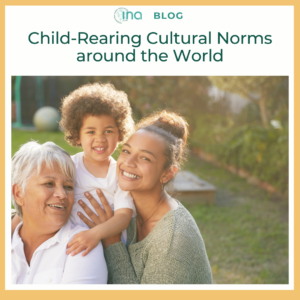 Parents face a very big job when they welcome a child into their family. They are not only responsible for keeping their child safe and healthy, but they have the privilege of learning what makes that child tick and what their unique personality is. Then, they are tasked with helping them build confidence in themselves and discover their gifts, so they can succeed and become a good person and a leader of their generation.
Parents face a very big job when they welcome a child into their family. They are not only responsible for keeping their child safe and healthy, but they have the privilege of learning what makes that child tick and what their unique personality is. Then, they are tasked with helping them build confidence in themselves and discover their gifts, so they can succeed and become a good person and a leader of their generation.
But, depending on where you raise your child, you may see that there are some different child-rearing norms. The cultural distinctions in how parents raise their children from country to country can be significant. Here, we’ll discuss some of the different cultures and how their child-rearing practices differ.
Thaty Oliveira, INA member and a nanny that has worked with families from countries such as the Philippines, France, Australia, Bangladesh, and parts of Central America, shares that working with these families gave her a glimpse into some of different elements of child-rearing from culture to culture.
She said, “I think they all have elements that differ, although I don’t like to generalize – even the American culture – because even places in various parts of the U.S. may differ.”
Oliveira explained that in her experience, American parents have a strong interest in learning about child development and philosophies about child rearing, perhaps to ensure that they are more prepared to raise their child to the best of their ability. While there may be some of that in other countries, Olivera shares that while working with families from France and Australia, she experienced a more laid-back approach to parenting.
She also explains that there are some differences in how close-knit families are. In Brazil for example, children remain an integral part of their family, even after they grow up and move out.
Lauren Holgate of Holgate Nannies, reiterates this point, and explains that in the Netherlands, time together as a family is actively encouraged.
“Grandparents are often involved in caring for their grandchildren on a weekly basis,” she said. “Maternity leave is around three to four months, then very often the parent will return to work less than five days per week. They have mama day or papa day which means they have a day or two each week with the children.”
Oliveira explains that in some countries, the role of a nanny is different – almost like just a mother’s helper – and hiring someone to work in the home be limited to upper class families. For families in Central America, it is uncommon to see a live-in nanny – instead, it is more common to see family taking care of family.
In Japan and Norway, it is common to see parents that are focused on cultivating independent children. Whether it is seeing children walking alone at a young age or letting them ride the subway to school or to complete household errands – children are seen more regularly without parental supervision.
No matter where the family is located, there is a universal commonality: love. Most parents want the best for their children. While each culture might go about raising children differently, there is an underlying theme of encouraging children to be the strong, confident people that they were made to be.
